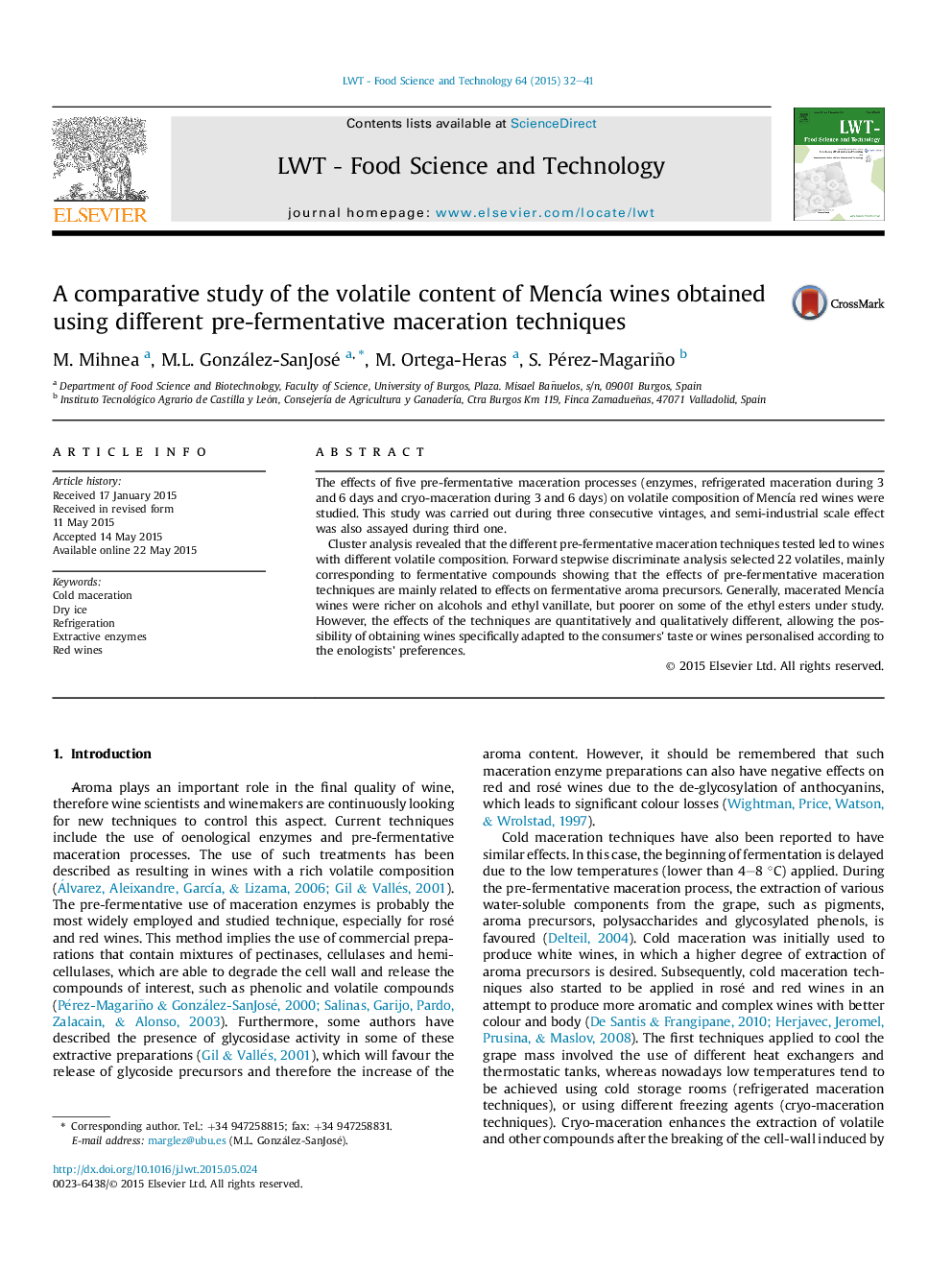| Article ID | Journal | Published Year | Pages | File Type |
|---|---|---|---|---|
| 6400699 | LWT - Food Science and Technology | 2015 | 10 Pages |
â¢Maceration techniques led to wines with different volatile composition.â¢Significant differences were mainly detected on fermentative volatiles.â¢Longer cold pre-fermentative maceration did not improve volatile composition.â¢Wines from enzymatic maceration showed the highest volatile differences.
The effects of five pre-fermentative maceration processes (enzymes, refrigerated maceration during 3 and 6 days and cryo-maceration during 3 and 6 days) on volatile composition of MencÃa red wines were studied. This study was carried out during three consecutive vintages, and semi-industrial scale effect was also assayed during third one.Cluster analysis revealed that the different pre-fermentative maceration techniques tested led to wines with different volatile composition. Forward stepwise discriminate analysis selected 22 volatiles, mainly corresponding to fermentative compounds showing that the effects of pre-fermentative maceration techniques are mainly related to effects on fermentative aroma precursors. Generally, macerated MencÃa wines were richer on alcohols and ethyl vanillate, but poorer on some of the ethyl esters under study. However, the effects of the techniques are quantitatively and qualitatively different, allowing the possibility of obtaining wines specifically adapted to the consumers' taste or wines personalised according to the enologists' preferences.
